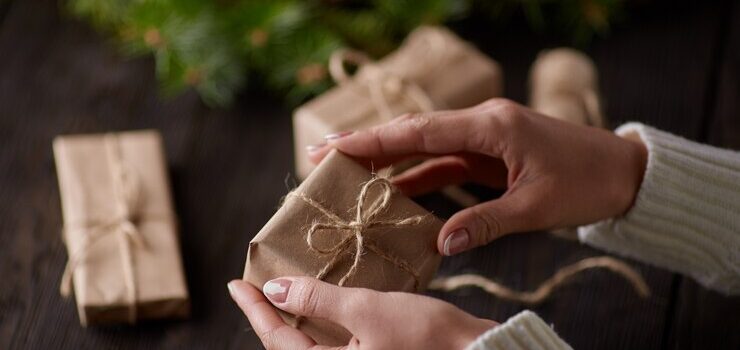
When it comes to outdoor adventures like rock climbing, securing a knot can be the difference between safety and danger. Whether you’re a seasoned climber or just starting out, mastering the art of knot-tying is essential. In this article, we’ll explore the techniques for crafting the perfect rock knot and provide expert tips and tricks to ensure your climbs are as safe as they are thrilling.
Table of Contents
Toggle1. Why Knots Matter in Rock Climbing
The importance of knots in rock climbing cannot be overstated. They secure the rope to your harness, anchors, and other safety points. A poorly tied knot can lead to rope failure or slippage, which poses serious risks during a climb. Proper knot-tying boosts both safety and efficiency.
2. Understanding the Basic Anatomy of a Knot
To master knot-tying, it’s essential to understand the basic parts of a knot:
- Standing End: The part of the rope that is attached to something, like an anchor.
- Working End: The part of the rope that you’re manipulating to form the knot.
- Bight: A loop formed in the rope.
- Loop: A circular or U-shaped curve in the rope.
3. The Most Common Rock Climbing Knots
Familiarize yourself with these essential knots for rock climbing:
- Figure-8 Knot: A reliable knot that climbers use for tying in and anchoring.
- Clove Hitch: Useful for securing yourself to an anchor quickly.
- Double Fisherman’s Knot: Ideal for joining two ropes together.
- Bowline Knot: Perfect for quick and easy tie-ins, but requires a backup knot.
4. How to Tie a Figure-8 Knot
The figure-8 knot is one of the most commonly used climbing knots. Here’s how to tie it:
- Create a loop by passing the working end over the standing end.
- Pass the working end through the loop to form a figure-eight shape.
- Follow the knot back through itself, tracing the original knot with the rope.
- Pull the knot tight and ensure it’s properly secured.
5. Tips for Securing the Perfect Knot
- Practice Makes Perfect: Regular practice will help you tie knots faster and more efficiently.
- Double-Check: Always inspect your knot after tying. Make sure the knot is tight, properly aligned, and there’s no slack.
- Leave Enough Tail: Ensure there’s at least a 6-inch tail at the end of your knot to prevent it from slipping.
6. Choosing the Right Rope for Knot-Tying
Not all ropes are created equal. Here’s what to look for in climbing ropes:
- Diameter: Thicker ropes are more durable but heavier; thinner ropes are lighter but may wear out quicker.
- Static vs. Dynamic: Dynamic ropes are essential for rock climbing because they stretch, absorbing the impact of a fall.
- Flexibility: A rope’s flexibility will determine how easy it is to tie knots and secure them.
7. Testing Your Knot’s Strength
Before you head out, it’s crucial to test the strength of your knots. You can do this by pulling on the knot with your body weight or using a belayer to apply tension. Make sure the knot holds and doesn’t slip under pressure.
8. Knot-Tying in Different Weather Conditions
Weather can affect your rope and knot performance. In cold or wet conditions:
- Rope Stiffness: Cold weather can make ropes stiffer and harder to tie knots.
- Wet Ropes: Wet ropes can become slippery, so take extra care when securing knots in the rain.
9. Common Knot-Tying Mistakes to Avoid
- Tying the Knot Incorrectly: Missteps in forming loops and bights can compromise the strength of your knot.
- Not Tightening the Knot: Failing to cinch down the knot properly can result in slippage.
- Skipping Safety Checks: Always perform a safety check on your knots before beginning your climb.
10. Using Backup Knots for Added Security
Sometimes, a backup knot can add an extra layer of safety. For example, after tying a bowline knot, you can secure it with a double-overhand knot for added peace of mind.
11. How to Untie a Knot After a Climb
After a long climb, untying knots can be tricky, especially if they’ve been under heavy tension. To make it easier:
- Loosen Gradually: Work the knot loose gradually rather than pulling too hard.
- Use a Knot-Tool: A small metal tool or carabiner can help you work the knots loose if they’ve become tight.
12. Advanced Knots for More Complex Climbs
As you advance in your climbing skills, you’ll need to learn more complex knots, such as the:
- Munter Hitch: Used for belaying without a belay device.
- Prusik Knot: This friction hitch allows climbers to ascend ropes.
13. When to Retire Your Rope
Rope condition is crucial for knot security. Over time, wear and tear can weaken your rope, even if your knots are tied perfectly. Retire your rope if it shows signs of fraying, soft spots, or if it’s been involved in a major fall.
14. Practicing Knots Off the Wall
Don’t wait until you’re on a climb to practice knot-tying. Work on your knots at home or at the gym so they become second nature. This ensures you can tie them quickly and confidently when you’re on the wall.
15. Conclusion: Perfecting Your Rock Knot Technique
Mastering rock knots is a skill that comes with time, patience, and practice. Focus on learning the basic knots, perfecting their execution, and always prioritizing safety. With the right approach and mindset, you can climb with confidence knowing that your knots are secure.
FAQs
1. How often should I practice tying knots?
Practicing at least once a week will help you maintain and improve your knot-tying skills.
2. Can I use the same knot for all climbs?
It depends on the type of climb. A figure-8 knot is versatile, but more complex climbs may require additional knots.
3. What’s the best knot for beginners to learn?
The figure-8 knot is a great starting point for beginners because of its simplicity and reliability.
4. Can I tie knots in cold weather?
Yes, but the rope may stiffen in cold conditions, so be sure to practice in varying environments.
5. Is it okay to use old ropes for knot practice?
You can use old ropes for practice, but always inspect them for wear and tear before climbing.
6. What’s the strongest knot for climbing?
The double fisherman’s knot is known for its strength, especially for joining two ropes together.
7. How do I know if my knot is secure?
After tying, pull the rope firmly to test the knot. Ensure there’s no slipping or movement.
8. Should I double-check my knots before climbing?
Always double-check your knots for safety, especially before beginning a climb.
9. Can a wet rope affect my knot?
Yes, wet ropes can be slippery, so be extra cautious when securing your knots in damp conditions.
10. Is it necessary to use a backup knot?
Using a backup knot adds an extra layer of safety, especially for critical knots like the bowline.













